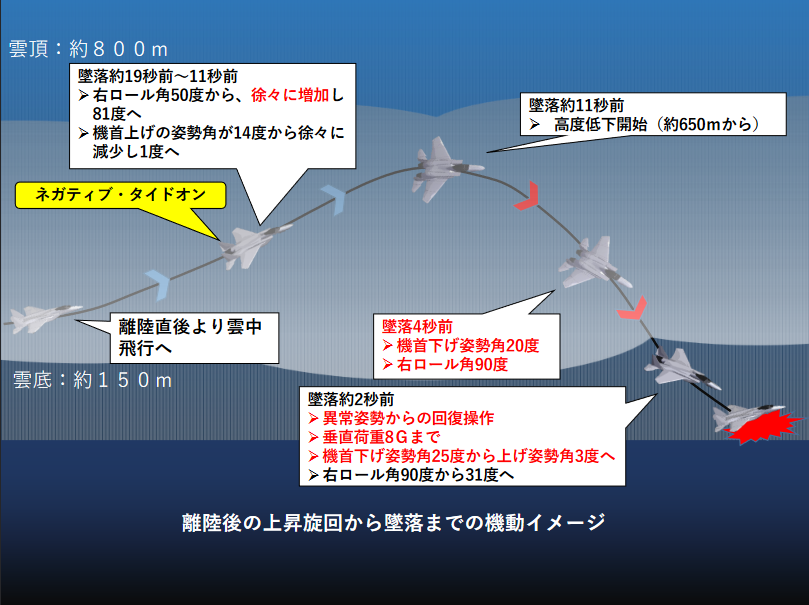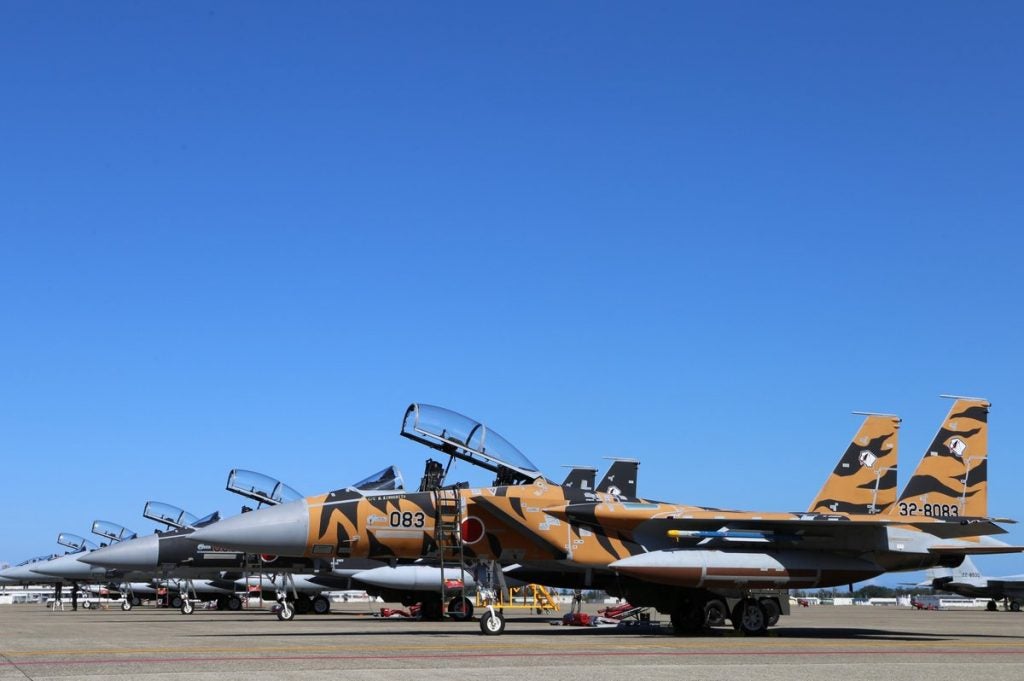Spatial Disoriention Responsible For Fatal January JASDF Aggressor Crash
An investigation by Japan’s Air Self-Defense Force into the fatal crash of one of its aggressor F-15DJs has found spatial disorientation to be the most likely cause of the accident.
The crash on the evening of January 31 happened a minute after the two-seater F-15DJ took off from Komatsu Air Base on a nighttime training mission. The F-15 was piloted by Tactical Fighter Training Group commanding officer Colonel Koji “Joe” Tanaka, 52, with Captain Ryusei Ueta, 33, as the weapons systems officer. Both crew members were killed in the crash, with Tanaka posthumously promoted to Major General and Ueta promoted to Major.
The investigation report found that the F-15 had started a climbing turn while inside clouds after taking off, during which the bank angle caused the F-15 to instead nose over and enter a rapid dive. However, the clouds removed visual references for the aircraft’s attitude, delaying the crew’s ability to realize that they had started diving. While the crew appeared to have realized that they had entered a dive shortly before impact, they were not able to recover the aircraft before the crash.

In addition to spatial disorientation experienced by the pilot brought on by flying in the clouds, the report also theorizes that the weapons systems officer had been too focused on tracking the training mission’s lead aircraft on radar to notice that the pilot had become disoriented. As a result, in addition to improved training for pilots to detect and counter the onset of spatial disorientation, the report also recommends improvements in crew resource management training to prevent similar cases of fixation.
Spatial disorientation occurs when visual, vestibular (organs of equilibrium located in the inner ear), and proprioceptive (receptors located in the skin, muscles, tendons and joints) sources of stimuli deliver conflicting information, causing a sensory mismatch that result in sensory illusions, making affected pilots struggle to determine which way is up. Spatial disorientation is among the leading causes of fatal military aircraft accidents, and as tragically demonstrated by Major General Tanaka, can strike even the most experienced of pilots.

